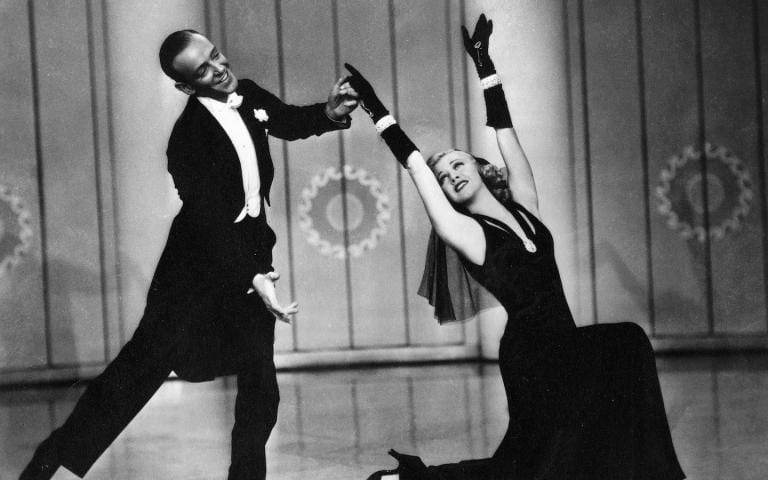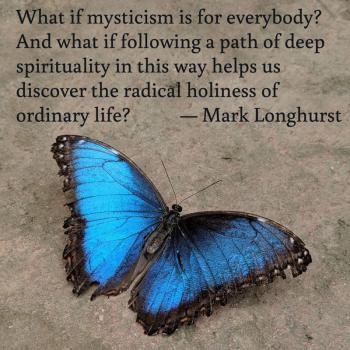Here is the third episode of my “Schola Mystica” podcast. The transcript of the episode appears below.
Mysticism is a notoriously difficult word to define — which means it is a tricky concept to understand.
The word gets used in slightly — or significantly — different ways, in different contexts. If we speak of Christian mysticism, or Eastern mysticism, or Neo-Platonic mysticism, we are speaking of three contrasting approaches to, and understandings of, mystical spirituality — and therefore, three distinct ways it can make a difference in our lives.
This is why I focus much of my work as a writer and teacher on specifically Christian mysticism. I don’t mean to give you the impression that I think Christian mysticism is the only appropriate type of mystical spirituality — not hardly. But it is one dimension of mystical spirituality, and I believe that Christian mysticism is a particularly beautiful and meaningful expression of mystical spirituality. So whether you identify as a disciple of Jesus of Nazareth, or not, I hope that you will find the following seven ways to think about mysticism to be instructive and inspirational. This isn’t the last word on mysticism in general; for that matter, it’s not the last word on Christian mysticism. These seven approaches are invitations to get to know mystical spirituality better, through a variety of perspectives.
The first way to think about mysticism involves the etymology of the words mystic, mystical and mysticism — they are related to the same word that gives us the word mystery. So Mysticism is related to Mystery, and God is the Ultimate Mystery. You’ll sometimes hear mysticism described as “having an experiential relationship with God.” But I would like to suggest a more focused way of understanding mysticism — as the spiritual encounter with God-as-Mystery. In other words, it is an encounter with God at a level too deep for words, too high for human cognition, too broad to be captured by our limited human brains and hearts. To say God is the Ultimate Mystery is to acknowledge that we will never fully understand or comprehend God, and that all our human doctrines, dogmas, and beliefs concerning God ultimately fall short. God is greater than the universe, how can we ever grasp the Divine Fullness in our finite minds? Well, we cannot. We will always encounter God as mystery. Mysticism is the spirituality of falling in love with the God who is the Ultimate Mystery.
The next way to think about mysticism involves prayer. Mysticism is a relationship, and prayer is the means by which this relationship is nurtured. For two human beings to have a relationship, there must be some form of communication, whether verbal or nonverbal — or for most of us, a combination of the two. It’s the same with the human-devine relationship. Prayer can include both a verbal and a nonverbal dimension. We pray with words, with images, with feelings, and with silence. All of these forms of prayer can assist us in fostering our relationship with the Divine Mystery. However, since in all the ways we can pray, our desire for and connection to our mysterious God can never be fully captured by words or language or thought, it’s clear that the most mystical forms of prayer are those that take us beyond words: contemplative prayer, silent prayer, centering prayer, the prayer of quiet. The prayer of wordless adoration, and of profoundly restful silence.
A third way to think about mysticism is a bit more embodied. We can think of mysticism as a dance, a dance between God, the Ultimate Mystery, and yourself. But you are not the one leading this dance! God is Fred Astaire, you are Ginger Rogers. This way of thinking about mysticism is important because it reminds us that God is the one in charge here, the one who leads, the one who directs our relationship. God is the creator, we are the creature. God is the lover, we are the beloved. This isn’t about gender: this is true no matter what gender you may embody. But it is about learning to trust, and follow, and let go. It’s not easy, because we live in a culture that emphasizes always being in control, always being a leader. We see being a follower as weak or passive. But in the mystical life, following Christ means accepting that we don’t have all the answers or all the gifts. We turn to God for divine providence to help us where we are lacking. Now, it’s been said that Ginger Rogers had to do everything Fred Astaire did, only backwards and in high heels! So letting God lead the dance does not mean that we don’t have our part to play. The mystical life is about learning to allow God to lead our lives, trusting that heavenly dance as the Divine Presence leads us into joy.

The next way to think about mysticism involves how it makes a difference in our lives. It has been said that prayer changes things — even if the only thing changed is the heart of the person who is praying. Mysticism functions in a similar way. The encounter with the divine nystery changes us. It expands our heart and our mind so that we may more fully embody the divine presence in our lives. In other words: Mysticism transforms consciousness, and a transformed consciousness transforms life. Of course, spirituality in general transforms our consciousness — or at least, it has the potential to do so. The Greek word metanoia, which is the first step on the journey of following Jesus, literally means to adopt an expanded mind, a higher consciousness. But the mystical path, involving that encounter with the Divine Mystery, takes us even further into a transformed mind — and heart. The mystical life is about receiving the gift that is always available: the gift of union with God. But this is more than just a nifty idea or a warm fuzzy feeling. It is about a profound interior transfiguration in which we are lifted up, out of the limitation of dualistic consciousness into the expansive joy of the unitive life. To be one with God is to be one with Joy and one with love. It is literally to be in heaven here on earth.
Our fifth way of thinking about mysticism entails an invitation: Mysticism invites us into hope, promise, and possibility. After all, union with God is not a dead-end street. Hope is the recognition that the blessings of God can transform our lives at any moment: now, tomorrow, or even at the end of time. Possibility is the embodiment of the Biblical promise, with God all things are possible. Union with God is not about a diminished life, but a joyfully, infinitely expanding life. And the promise that divine hope and possibility offer us is the promise of love, of joy, of peace, of all the fruits of the Spirit, blessing not only us but indeed all those who are held in the infinite embrace of divine felicity. In other words: everyone.
Our next way of thinking about mysticism is a recognition that this is not just about some interior beatitude, some inner happiness. The Mystical Life is most fully realized in a life given to compassion, justice, and reconciliation. Our relationship with God makes it possible for us to have meaningful and healthy relationships with one another. Many of the great mystics have been social reformers, prophets, teachers and saints. They have made a difference in the world at large. Their relationship with God is not some private, exclusive affair, but rather a fountain of mercy that brings blessings to all. To be a mystic is to make a difference in the world, a difference fueled by the heavenly life flowing within.
Finally, our seventh way of thinking about mysticism is an invitation to consider where mysticism can take us. It’s about accepting the blessings of a heavenly life today, but it’s also about a pilgrimage to a heavenly life tomorrow, and the day after tomorrow, and indeed for all eternity. So the Mystical Life means sharing the fruit of the Spirit with the world at large. Mystics are not “just” social reformers or saintly do-gooders. They embody the very love they are seeking to share with others. And they embody the very joy, and the very peace, and indeed all of the Fruits of the Spirit. Mystical spirituality can inspire us to do great things, but ultimately it’s not about what we do so much as who we are. Mystical spirituality means we are one with God, We are participants in the divine nature. This is our destiny as followers of Christ; as Christian mystics, we are invited to make the hidden blessings of God manifest in our lives — and then, to serve and facilitate the manifestation of those blessings in the lives of others.
There’s so much more to say about mysticism — both Christian mysticism and mysticism in general. But I hope these seven entry-points into thinking about Christian mysticism can be a good start for now. I encourage you to take time to pray — foster a place in your heart for the Spirit of God, and then: the mystical life truly is yours.
Enjoy reading this blog?
Click here to become a patron.
Featured photo: Photo by RKO/Kobal/REX/Shutterstock (5885689l)
Fred Astaire, Ginger Rogers in “Shall We Dance” (1937) directed by Mark Sandrich.














